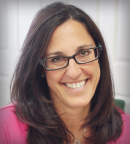Except for a ganglion cyst that had mysteriously popped up on the palm of my right hand in the winter of 2016, I appeared to be in excellent health. I had never had any serious illnesses in my then 55 years and rarely even got colds. If the annoying cyst hadn’t interfered with my normal daily routine, I might not have discovered I was harboring late-stage non–small cell lung cancer (NSCLC) (adenocarcinoma) until it was too late to treat.
I had made an appointment with a surgeon to aspirate the cyst, and he sent me for a series of preoperative tests, including a chest x-ray, before he would perform the aspiration. Recently divorced after being married for 25 years, I was about to start a new job and was excited about the future, when the surgeon called to tell me a mass was found on the lower lobe of my right lung, and I would need additional testing. A computed tomography scan determined the mass to be about 2 cm, but the test was inconclusive about whether the tumor was malignant or benign. The results from a subsequent positron-emission tomography scan were also inconclusive, so the next step was to surgically remove the tumor and biopsy the tissue.

Debra Bowler
Remaining Optimistic
Throughout this process, I remained optimistic that the biopsy would definitively prove the mass was benign. I had no symptoms of lung disease, no shortness of breath, no coughing, no weight loss, no fatigue. There was no physical hint that I had cancer, much less advanced cancer. So, it was especially shocking to learn when I awoke from the surgery that I had stage IIIA NSCLC and that the surgeon had removed the bottom lobe of my right lung, along with several lymph nodes, one of which had tested positive for cancer.
My oncologist recommended 4 rounds of chemotherapy and 28 rounds of daily radiation therapy, as well the antifolate antineoplastic agent pemetrexed—all of which also, curiously, took care of the ganglion cyst. Through it all, I hoped the combination of surgery, chemotherapy, and radiation therapy would be successful in curing my cancer. To date, I remain cancer-free.
Incorporating the Lessons Learned From Cancer
What was perhaps even more frightening than getting the actual cancer diagnosis was when my oncologist told me the 5-year survival rate for this cancer and stage was between 2% and 15%. It’s only now, after more than 6 years since my diagnosis, that I’m able to relax my vigilance a bit. I’ve just decided to live my life, and if a recurrence does happen, I’ll deal with it, just like I’ve dealt with other life-altering events.
Cancer is the great leveler, and I’ve learned many lessons from my cancer experience, perhaps most importantly, to be more forgiving, aware, and empathetic. I think I’m a kinder person now and a better friend and mother. I’ve become a patient advocate to help other cancer survivors through their journey. My biggest achievement is being the Lead Content Advisor for XpertPatient (xpertpatient.com), a resource website for cancer survivors, and the work is rewarding.
Although the thought of a cancer recurrence is a lingering worry, I try to live more in the present than the future. When I was going through treatment, I awoke every day just trying to get through that day, and that exercise has taught me how to be more present in my daily life.
I know how fortunate I am to have survived this disease. And although I’m determined to live in the present, I’m also once again excited about the future and what lies ahead.
Ms. Bowler lives in Tinton Falls, New Jersey.
Editor’s Note: Columns in the Patient’s Corner are based solely on information The ASCO Post received from patients and should be considered anecdotal.

